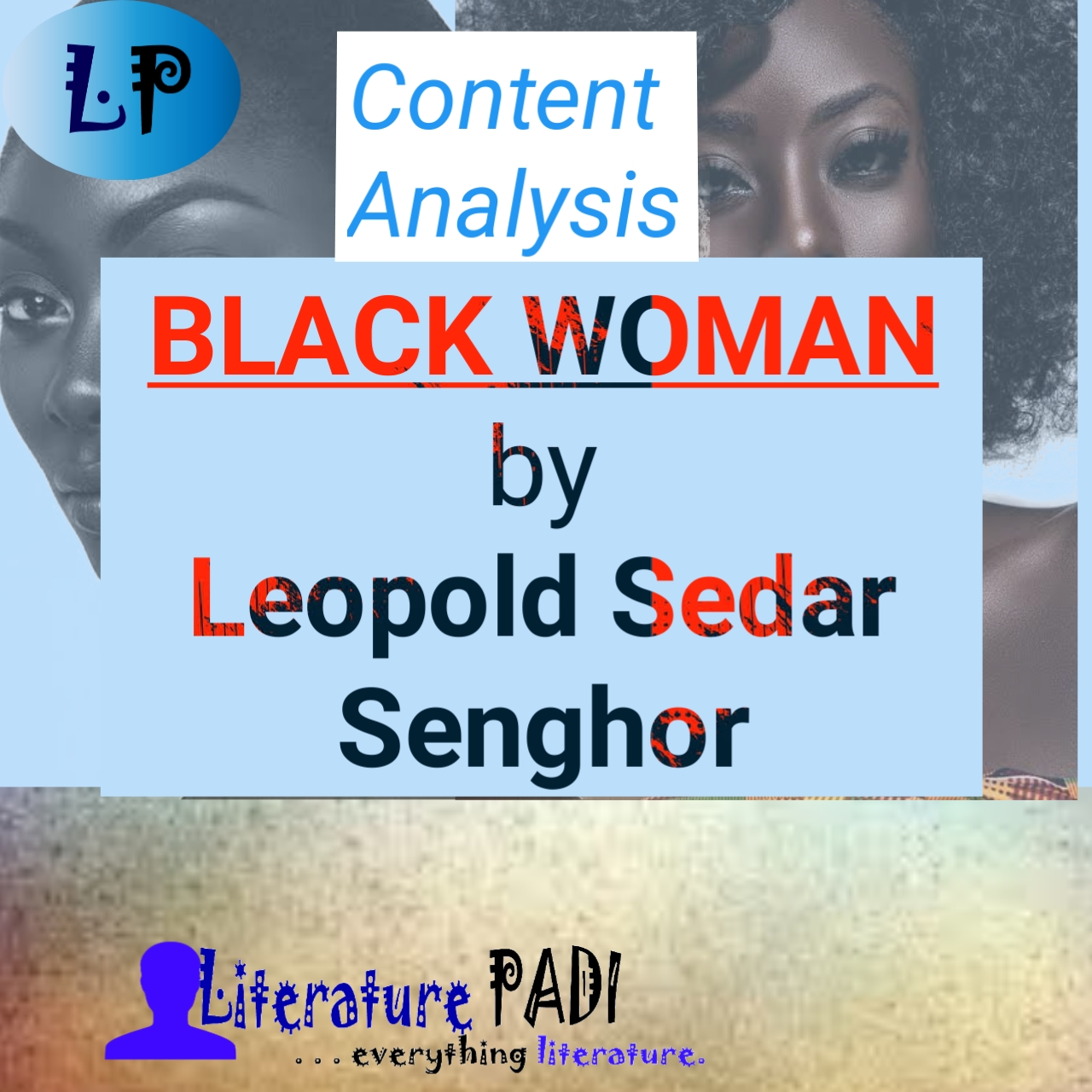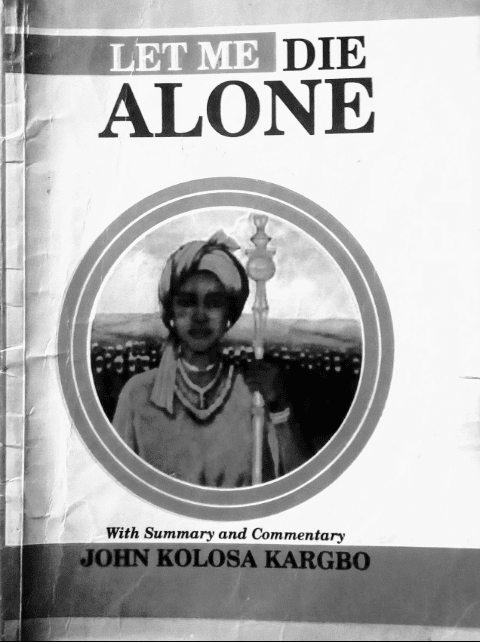Before the poem was written, beauty had often been seen through the lenses of the Europeans in the figure of the white woman. So was the worthiness of a culture and civilisation measured by the European values. Leopold Sedar Senghor changed this trend with his appreciation of beauty in the form of a “black naked” woman and also with his reiteration on the worthiness of the African culture.
Leopold Sedar Senghor was a proponent of the Negritude poetry of French expression. He was the first indigenous president of the independent Senegal, a former French colony.
During the colonial period, France operated the assimilation policy in its African colonies; the policy required the adoption of French culture, ideas, and value system in all its totality resulting in the discard of the African culture.
The import of this is that many Africans were made out of necessity to aspire to be more French than being Africa; to imbibe the French values; and to see everything African as primitive and uncivilised. In other words, they saw the world through the European lens.
Read the Poem: BLACK WOMAN
However, rather than becoming Europeans, they became half-Frenchs and half-Africans; neither being any of the two. They lost their African identity and in turn did not have the French identity. They were the types Birago Diop described in his popular poem, “Vanity”, as the generation that had lost touch with its roots.
Negritude Poetry, introduced by Aime Cesaire and promoted by the likes of Leopold Sedar Senghor and Birago Diop, thus reasserts the African identity and culture eroded by the domineering “French civilisation”. Senghor is often referred to as the “father of negritude poetry”.
The poem, “Black Woman”, like every of Senghor’s poem, is a negritude poem. It is quite clearly about the praise of the African woman as a person and symbol of the richness of the African culture. The poem expresses the beauty of the African woman (and by extension the African culture) that was hitherto expressed in the negative light.

The term “woman” repeated all through the poem often collocating with “dark”, “naked”, and “black” refers to the African woman (otherwise women of black race) as mother, daughter, sister, and of course, the poet’s home country. Needless to say the poem is influenced by the practices in the poet’s own country.
Before the poem was written, beauty had often been seen through the lenses of the Europeans in the figure of the white woman. So was the worthiness of a culture and civilisation measured by the European values. Leopold Sedar Senghor changed this trend with his appreciation of beauty in the form of a “black naked” woman and also with his reiteration on the worthiness of the African culture.
In structure, the poem has a total of thirty-three lines accompanied by several repetitions (refrain), parallelism and rich symbolisms.
In lines 1 to 10, a “black woman” is naked to the effect of a full appraisal of her body features. The poet persona claims to be clothed in her colour; to have grown up in her shadow and to have felt the gentleness of her hands “over my eyes” (at birth).
The combined use of tactile and visual imageries in these lines suggests that the “naked woman, black woman” here refers to the poet persona’s mother – the one who transfers life to him through birth.
The poet persona then portrays the black woman as a landscape; “my promised land” on whom “I come upon”. He appreciates her beauty as a man would his lover; “your beauty strikes me to the heart like the flash of an eagle” (lines 9 to 10). He is obviously captivated by her beauty. And it is probable that the appreciated woman has changed in form to a lover before the poet persona.
In lines 11 to 19, the poet persona adores the black skin. He iterates his love for the black skin in the substitution of “dark” for “black” in “naked woman, dark woman”, and the comparison with “sombre raptures of black wine”. He compares her to “firm-fleshed ripe fruit”; expressing her form and temperament as “savannah stretching to clear horizons” and “savannah shuddering beneath the East Wind’s eager caresses”.
The poet persona again reminds us the addressee is not just a woman in the literal sense. His depiction of the exhilaration that follows the conquests is a clear pointer to African practices (and warfare) and a reference to the poet person’s African root: “carved tom-tom, taut tom-tom, muttering under the Conqueror’s hands”.
The poet persona also admires the woman’s rendition of “the spiritual song of the Beloved” with her “solemn contralto voice”. We may also infer that the black woman is not only a good singer but also one with humble and dignified conduct.
In lines 20 to 28, the poet persona elevates the beauty of the “naked woman, dark woman” with rich descriptions and more profound comparisons. She is referred to as “oil that no breath ruffles . . .” – an inference to her smooth skin and unblemished beauty – also as “a gazelle limbed in paradise” – yet again a picture of a perfect creation.
Some African tribes believe a gazelle (a member of the antelope family) with its lustrous eyes is a beautiful animal. The Yoruba in Nigeria for example believe a gazelle, known in the local language as agbonrin (Pronounced “aa-gba-un-rin”), is a beautiful animal whose beauty is unmatched. This belief probably extends to Joal in Senegal where the poet comes from. “… limbed in paradise” completes the total perfection the poet persona intends.
The poet persona makes reference to her smooth and shiny naked dark skin which houses “pearls”, also smooth and lustrous, one he refers to as “delights of the mind”. The poet persona further conjures the picture of a “naked dark woman” with watered skin against which the “red gold” (she adorns herself with) shines. It is no coincidence that the woman skin glows and all her adornments are shining objects too; thus, accentuating her desirable glowing smooth body.
Describing further, the poet persona highlights the woman’s hair as a part of her beautiful features and of course, her eyeballs which he describes as “neighbouring suns of your eyes”. He does not shy away from the fact that these provide him comfort and care.
In lines 29 to 33, the poet persona sings in praise of the beauty of the “naked woman, black woman”. He also recognises the ephemerality of the human existence and the “black woman” as a mortal whose beauty “passes” and fleets into “ashes to feed the roots of life”. He subtly describes the inevitability of death: “… jealous Fate turn you to ashes to feed the roots of life”.
He however insists on appreciating the black woman’s beauty whose form (as described in the poem) he fixes “in the eternal” where the hands of “jealous Fate” cannot reach.
FIGURES OF SPEECH
Here are some of the figures of speech deployed in the poem.
(i) Metaphor: The poem is metaphor-filled. We only can mention a few here. There are instances of metaphor in lines 2, 12, 21, 23, and 24: “your colour which is life … your form which is beauty”; “firm-fleshed ripe fruit, somber raptures of black wine”; “oil that no breath ruffles, calm oil on the athletes flank …”; “gazelle limbed in paradise, pearls are stars …” etc.
(ii) Simile: There is an instance of simile in line 11-12: “… your beauty strikes me like the flash of an eagle”.
(iii) Repetition: It is another prominent feature of this poem. “Naked woman, black woman” is repeated twice in lines 1 and 29, and “naked woman, dark woman” in lines 11 and 20. Also repeated in the poem are “beauty”, “oil”, “savannah” and “shadow”.
(iv) Apostrophe: this figure of speech is used severally in the poem, particularly lines 1, 11, 20 and 29 where the poet persona addresses the woman as if she were present in front of him naked.
(v) Personification: There are manifestations of personification in lines 15-16 and 32: “savannah shuddering … East Wind’s eager caresses”; “jealous Fate” etc.
(vi) Alliteration: There are instances of alliteration in lines 1, 2, 4, 6, and 12: “woman … woman”; “clothed … colour”; “grown … gentleness”; “high … heart”; “firm-fleshed fruit” etc.
(vii) Parallelism: It manifests in lines 1, 11, 20, and 29.
(viii) Paradox: it is in lines 32-33; “ashes to feed the root of life”.
Mood of the poem is adoration. The poet adores the beauty of the African woman and the African culture in its totality.
Tone of the poem is appreciative. The appreciation of the black beauty is apparent and clearly foregrounded in the poem.
 WHATSAPP: Click HERE to join the new Literature PADI WhatsApp group to receive latest updates on your phone and for further literary discussions!
WHATSAPP: Click HERE to join the new Literature PADI WhatsApp group to receive latest updates on your phone and for further literary discussions!









Rillwan and co;
You guys are doing wonders. Your literary content is rich in antecedent…
I read dramatic arts years back in ife. I’m not surprise at all to see the beauty and the stunning literary devices portrays. God bless. I’ll will like to promote you guys content. Do chat me up on 08062686507
Good job guys keep it up.
Very good analysis. I have an exam on this, and therefore this content is really helpful. 👍
I agree
It is a good work keep it up
This is wonderful! I have never seen a well detailed work like this…❣️
This is the most detailed work I have ever seen and also helpful keep it up
Good job guys 👏
This is very helpful,
Thanks alot.
Keep it up 🤠🤠😉👍👍👍👍
kip the good work going
I have always taking my time to look at liberation of African woman but when i read through this work it inspired me the more and gave me inspiration that should continue with the struggle
This is very detailed and helpful, thanks a bunch
Thanks it is very helpful
Thank u for d reply u give me
Very good 👍
Comments are closed.